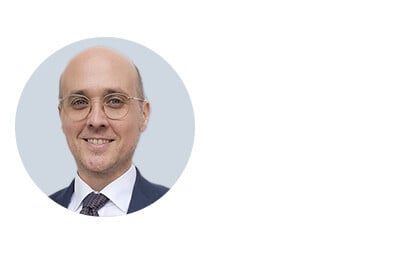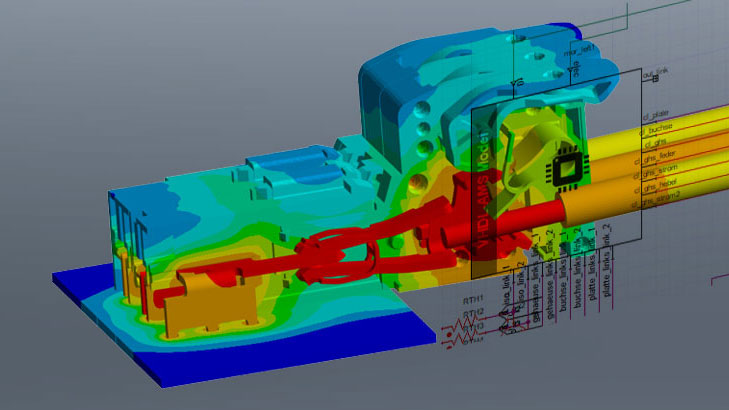Software Replacement Projects: How they work in practice
Klaus Kuboth
10.10.2024
Interview with Eugen Kistner, Strategic Account Manager at CADFEM
When existing software is replaced by new tools, numerous questions arise for companies. Eugen Kistner, Strategic Account Manager at CADFEM, has assisted several companies with implementation and replacement projects in their CAE software landscape. In this interview, he provides insights into best practices.

How do companies start a replacement project?
To start with, of course, all questions on the technical side must be clarified. Which tool is the right one? How do we manage the migration of relevant data? Which interfaces do we need and how can these be implemented? The answers to such questions are always very individual, so there's no standardized procedure. Together with our customers, we design and support replacement projects that are truly tailored to the needs and requirements of the respective companies.
So, there’s a project plan that includes the individual milestones and measures?
Exactly. We have worked with more than 5,800 companies on our projects over the past few decades. From this experience, we bring a suitcase full of tools and building blocks, which includes processes, training, support and many other topics. We put these together in such a way that they are individually tailored to the respective use case. Of course, we do this in close consultation with our customers.
How exactly do you find out which approach is the right one?
Listen, listen, listen - and understand. Our job is to listen to companies. Or rather, we enable companies to listen to themselves. We believe that the solution should follow the problem. In other words, we work with the customer to find out where untapped potential lies and how it can be realized. Only then do we crystallize what a project could look like in terms of implementation.
eBooklet: Consistently integrating simulation
In our eBooklet, you will learn how simulation can be integrated holistically into your development processes. Save time and costs and increase your competitiveness.

... and probably also how much it will cost.
Absolutely. Let's be honest, if we can show that a solution accelerates the time-to-market by 30%, for example, but at the same time could initially be more expensive than the previous scenario due to the changeover, no one will shout hurray at first. It's important that we show from the outset what costs the company will incur, and how great the added value is. Software should never be used as an end in itself. There must be a healthy balance between costs and benefits.
What does such a business plan look like?
Here too, we work hand in hand with the customer and show them what the implementation plan entails. It's important to us that we don't make promises we can't keep. Of course, software projects are associated with increased costs, especially at the beginning. This doesn't just apply to financial aspects; employees also have to get used to new tools and processes and may need longer than before to complete their daily tasks. At the same time, however, we also show when the point is reached where goals can be achieved more quickly by using simulation and the added value it generates in the product development process. This is precisely when a replacement project is worthwhile. We literally carry out a reality check here: What is actually possible and in what time frame? What are the expectations? What would be the worst case? Running through such scenarios is an important part of our work.

Realizing the full potential of simulation
Simulation should be intergrated holistically throughout the entire product development process. Only then can its full potential be realized. How is simulation used?
The project plan is in place and the decision for a new tool has been made. How do you bring the people in the company on board?
First, we send them a signal: We are here, and we will accompany you step by step. Very few projects run in such a way that you decide on a software solution and then introduce it as an overarching tool. The structures and processes are too complex and have developed too much for this approach. Instead, you start with initial pilot projects to see if something works. Based on this, topics can then be expanded - or not. This approach gives users the certainty that everything will not change abruptly for them and that they will be involved throughout the process.
What can this look like in concrete terms?
For example, we offer a 365-day learning subscription that gives engineers unbureaucratic access to high-quality eLearning courses and training on all aspects of simulation. Many of our customers use this opportunity to build up knowledge and expertise in the workforce and to make the hurdles for reliable use of the software as low as possible. CADFEM learning paths provide simulation beginners as well as experienced FEM users with suitable training concepts with which they can achieve their individual learning goals. This is great for HR managers because it provides them with a valuable planning tool for systematically strengthening simulation expertise within the company in a way that is tailored to their needs.
“Tailored to their needs” sounds good. How can this be ensured?
In addition to the training courses, we offer formats that cover the needs of specific issues. This involves the concrete transfer of know-how on customer-specific Ansys simulations. These can be regular meetings at the decision-making or user level, consulting projects with knowledge transfer or individual events in which best practices are shared. In other words, we advise, accompany and support both the user and the decision-maker during this test phase so that real added value is created.
Are there any differences between the various stakeholder groups?
In rare cases, the impulse for change comes from the users themselves, because they realize that they can no longer complete their tasks using the existing settings. In most cases, however, users do not see the need to switch to a different software solution. This is because many measures will not be noticeable in everyday working life in the short term (and might even additional work). For many employees, it's difficult to keep track of a period of three, five or ten years. But that's exactly what it's all about: continuously encouraging employees and showing them the prospects. This can be achieved with professional change management or with measures such as the training learning subscription. Our approach is based on the assumption that all stakeholders are equally important: Users, decision-makers, IT, C-level. In our experience, synergies only arise when everyone feels like they are being taken seriously and are working together.

© CADFEM
Eugen Kistner
Eugen Kistner is Strategic Account Manager at CADFEM in Stuttgart. He is an engineer himself. In his almost 20 years at the simulation specialist, he has supported and advised many companies on the implementation or replacement of CAE software.




